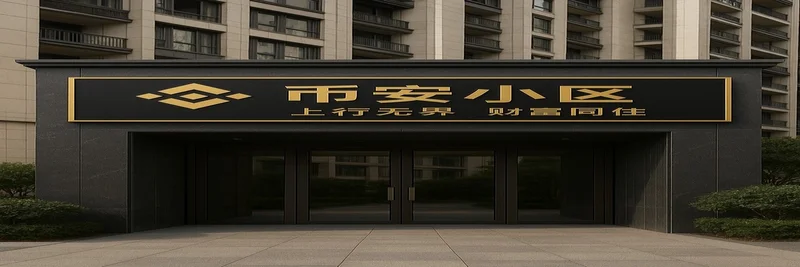Quick context
币安小区 (pinyin: Bi An Xiao Qu, loosely “Binance Neighborhood”) is a Chinese meme token on the BNB Chain using the BEP-20 standard. It rides a broader, Binance-themed meme wave that spiked in early October 2025—think playful slogans like “开币安汽车,住币安小区,享币安人生” (“drive a Binance car, live in a Binance community, enjoy a Binance life”). The meme spread via Chinese crypto socials and was amplified by interactions around Binance figures, fueling sibling tokens such as 币安人生 (Binance Life) and PALU. Notably, reports indicated 币安人生 hit a >$1.5M market cap within three days and appeared on Binance Alpha, which boosted interest in related Binance-flavored memes across BNB Chain.
Token essentials
- Token symbol: 币安小区
- Contract: 0xc019ef308f8bc6ab223a1f16526f6ac5dc594444
- Standard: BNB Chain (BEP-20)
- Total supply: 1,000,000,000 (1 billion) 币安小区 tokens
- Launch context: The token appears to have been launched via meme-focused platforms like Four.meme on BNB Chain.
If you’re new to BEP-20: it’s the token standard for BNB Chain (similar to ERC-20 on Ethereum). It defines how tokens can be transferred, approved, and interacted with by wallets and dApps.
Narrative: why Chinese crypto users care
This meme leans into the idea that Binance is the “Apple of crypto”—a premium ecosystem with lifestyle appeal. The line “开币安汽车,住币安小区,享币安人生” became a social catchphrase, making the “Binance + XX” format a template for new meme tokens. The cultural resonance, rather than heavy utility, is the core driver here. For practitioners studying meme dynamics, 币安小区 is a live case in how narrative, language, and KOL interactions can bootstrap attention and liquidity fast.
Market and liquidity snapshot (early October 2025)
Numbers on new meme tokens move fast and can vary widely by source. Reported figures around the first week of October 2025 included:
- Price: Observations ranged around ~$0.000103 USD for 币安小区/BNB, while ApeSpace showed ~$0.00002011 USD at one point.
- 24h volume: Ranged from near-zero to ~$25,071 USD, and up to ~$198.13K USD on ApeSpace.
- Liquidity: Some trackers (e.g., GeckoTerminal) showed $0 at moments; ApeSpace indicated roughly ~$18.44K liquidity for the 币安小区/WBNB pair.
- Holders: ~197 addresses (as of Oct 5, 2025).
- Market cap: Around ~$20.11K USD per ApeSpace at one snapshot.
Why the variability? Early-stage meme tokens can see thin order books, rapid new LP deposits, and volatile demand. Data sources ping different pools at different intervals, so expect discrepancies.
A note on “bonding curve” launches: Some meme launchpads use a bonding curve—an automated price function that sells tokens to early buyers at progressively higher prices as supply is sold. Liquidity is often deposited into a DEX like PancakeSwap and sometimes burned (sent to an unrecoverable address), which can signal reduced risk of rug pulls on LP—but it does not guarantee safety.
Contract audit signals to watch
Audit-style summaries from community tools (e.g., ApeSpace) suggested:
- Ownership renounced: Likely (means the deployer relinquished admin rights; good for decentralization).
- Verified contract: Yes (source code published for transparency).
- Mintable: None found (reduces risk of unlimited supply minting).
- Blacklist function: None found (holders shouldn’t be arbitrarily blocked).
- Balances modifiable: None found (prevents stealth edits to account balances).
- Buy/Sell tax: 0% (trades avoid tax overhead, but also remove tax-based anti-bot defenses).
- Transfers pausable: Yes (an admin can temporarily halt transfers; sometimes used for emergencies or upgrades, but it’s a centralization risk if misused).
- Anti-whale/sell limits: None found.
“Transfers pausable” is the standout. If a single role can pause, that’s operational power. Always confirm who controls that permission (e.g., a timelocked multisig vs. a single wallet) and whether ownership is truly renounced.
Where to research and trade
- DEX: The primary venue on BNB Chain is PancakeSwap. If LP is present for 币安小区/WBNB, you’ll find it there.
- Analytics and trading: Consider GMGN.AI’s 币安小区 page for real-time metrics, smart-money tracking, and risk checks.
- Launchpad context: Four.meme hosts meme launches and may provide historical context on bonding curve mechanics.
- Market trackers: Sites like ApeSpace and GeckoTerminal often show pool liquidity, price, and volume—but always cross-check multiple sources.
Tip: Before trading, review recent wallet activity, LP changes, and contract flags (e.g., pause role). Thin liquidity means slippage can be high; use cautious position sizing and consider limit tools where available.
Practical takeaways for builders and analysts
- Narrative > utility (at first): In Chinese crypto circles, “Binance Life” became an identity meme. Tokens like 币安小区 piggyback on the halo effect, proving community memes can bootstrap liquidity and holders quickly.
- Data triangulation is essential: New tokens produce noisy signals across trackers. Cross-verify price, volume, and LP across multiple sources before making any move.
- Contract controls matter: 0% tax and no mintability are nice, but the ability to pause transfers introduces centralized risk. Check if ownership is genuinely renounced and who can invoke pause.
- Liquidity provenance: If LP is burned and the bonding curve is complete, that can improve trust. Still, monitor whether new LP is added or removed and watch for whale dominance.
Final thoughts
币安小区 is a snapshot of how culturally specific memes can catalyze on-chain activity on BNB Chain. Even with modest market cap and holder counts at the time of writing, the token illustrates the speed at which narrative-led assets can form micro-markets. If you’re exploring or participating, anchor your decisions in on-chain data, confirm contract permissions, and treat early meme tokens as high-volatility experiments—fun to study, but requiring strict risk management.



